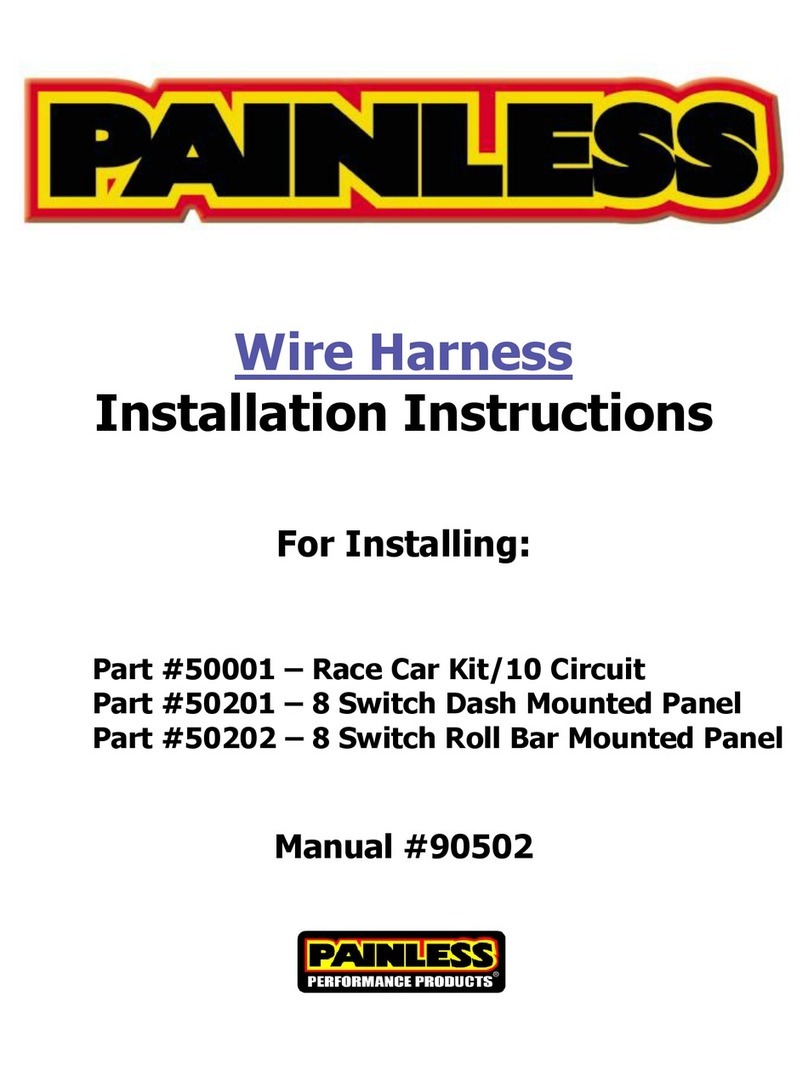
8
You may be wondering… “Why two harnesses in this kit instead of just one
grouped together like most harnesses?”
You will notice one harness has a fuse block pre-installed. This will be known in
this manual as the FUSE BLOCK HARNESS. This harness contains all of the power
wires to components like the headlight switch, turn signal switch, brake switch etc. and
also supplies power to the fuse block from the battery. This harness has extra length
built in to allow the fuse block to be mounted up to 10’ away from major components like
the headlight switch and the ignition switch.
The secondary harness, or COMPONENT OUTPUT HARNESS, contains wires
from individual switches and sending units to the components they operate. As an
example: all the wires from the turn signal switch to the turn indicators, oil/temp/fuel
sending units to the gauges, and headlight switch out to the exterior lights. Since the
majority of this harness involves connections made to components of the dash, we are
given a common reference point since most dashes are slightly forward of the center of
the vehicle. This allows this secondary harness to have shorter lengths than the fuse
block harness but still provide ample length for just about any install. These shorter
lengths result in less waste when you route and cut these wires to length.
SMALL PARTS
Included with the Painless harness are parts kits containing miscellaneous
terminals, fuses, screws, and nuts. Many of the terminals are non-insulated and will
require heat shrink to be applied after the terminal has been properly crimped. Heat
shrink has been supplied.
These non-insulated terminals follow the same “old-school” traditional feel of this
nostalgia harness; colored insulated terminals would seem out of place. When crimping
these terminals, take notice to the split in the terminal. Make sure the smooth side of the
jaw on the crimper goes towards this split.
One small bag kit, labeled ALTERNATOR, contains
all of the components for an inline fuse installation and
alternator connections. This fuse is to isolate the battery
from the alternator and Painless harness. These parts
include the base with cover, fuse, mounting screws and ring
terminals.
“Umbrella” style zip ties have been provided for you
to attach the Painless harness to the inner fender, core
support, and/or frame. These zip ties fit into ¼” holes left
behind by factory plastic retainer loops or those created with
a drill by the installer.




























